47k Ohm Resistor: Color Codes and Applications
In electronic circuit design, the choice of parts affects how well the system works. The 47k ohm resistor is popular because it can be used in many different ways. This article explains the technical details and practical uses of the 47k ohm resistor that helps control current, keep voltage stable, and protect delicate parts of a circuit. It looks at things like the resistor's value, color coding, and power ratings, and how it works in different circuit setups. Understanding these details shows how important the 47k ohm resistor is in modern electronics, from basic color coding to advanced uses like transistor biasing and feedback.Catalog
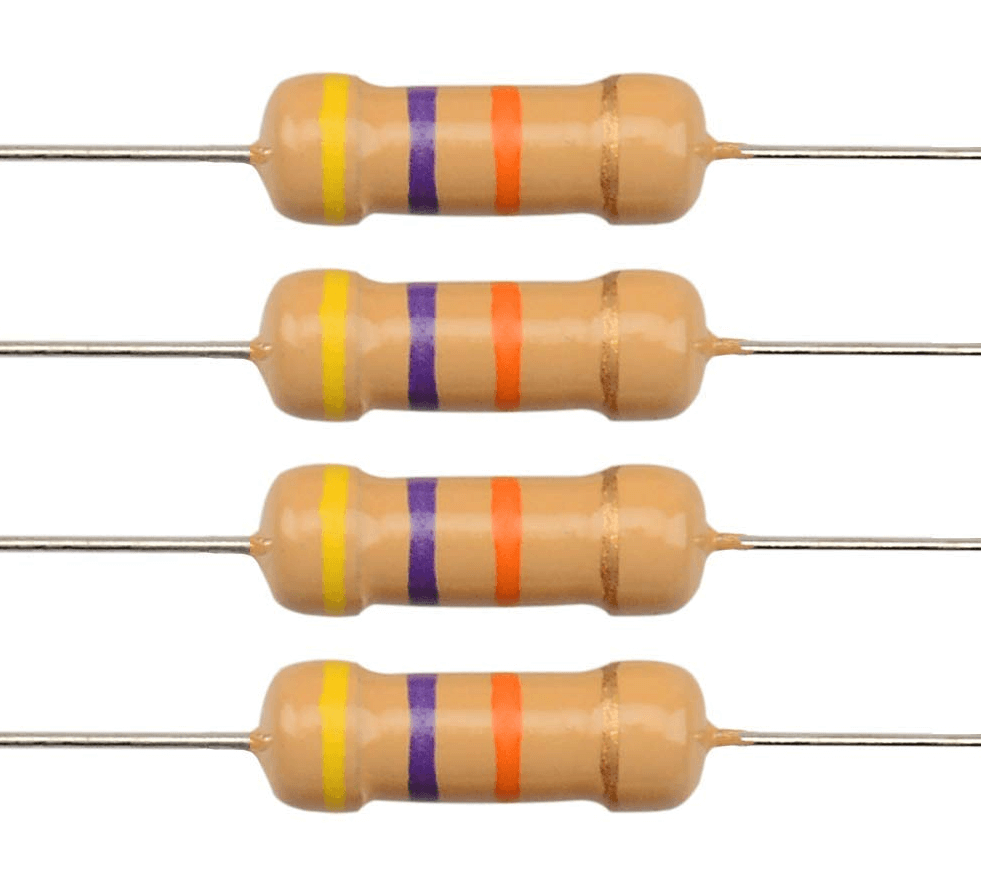
Figure 1: The 47k Resistor
What Is the 47k Resistor?
A 47k resistor that offers 47,000 ohms of resistance, and its primary function is to regulate the flow of current, ensuring the circuit doesn’t experience too much or too little resistance. This regulation helps the circuit function smoothly and safely. The 47k resistor is useful in circuits that require stable voltage and current levels, such as those involving voltage division, transistor biasing, or amplifier gain control. By managing the current effectively, the 47k resistor protects sensitive components from potential damage caused by excessive current. It also helps maintaining the correct signal output in various control and signal processing systems.
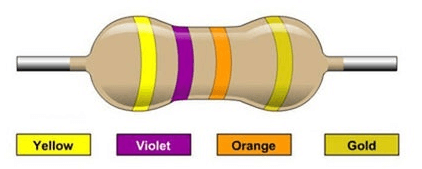
Figure 2: 47k Resistor Color Code
The 47k Ohm Resistor Color Code
The 47k ohm resistor, like most resistors, is marked with a color code to indicate its resistance value, making identification quick and easy. The color sequence for a 47k resistor is yellow, violet, orange, and gold.
The yellow band represents the number 4, and the violet band represents 7, forming the base value of 47.
The orange band is a multiplier, indicating that the 47 should be multiplied by 1,000, and gives a resistance of 47,000 ohms.
The gold band signifies a tolerance of ±5%, meaning the actual resistance may vary slightly within this range.
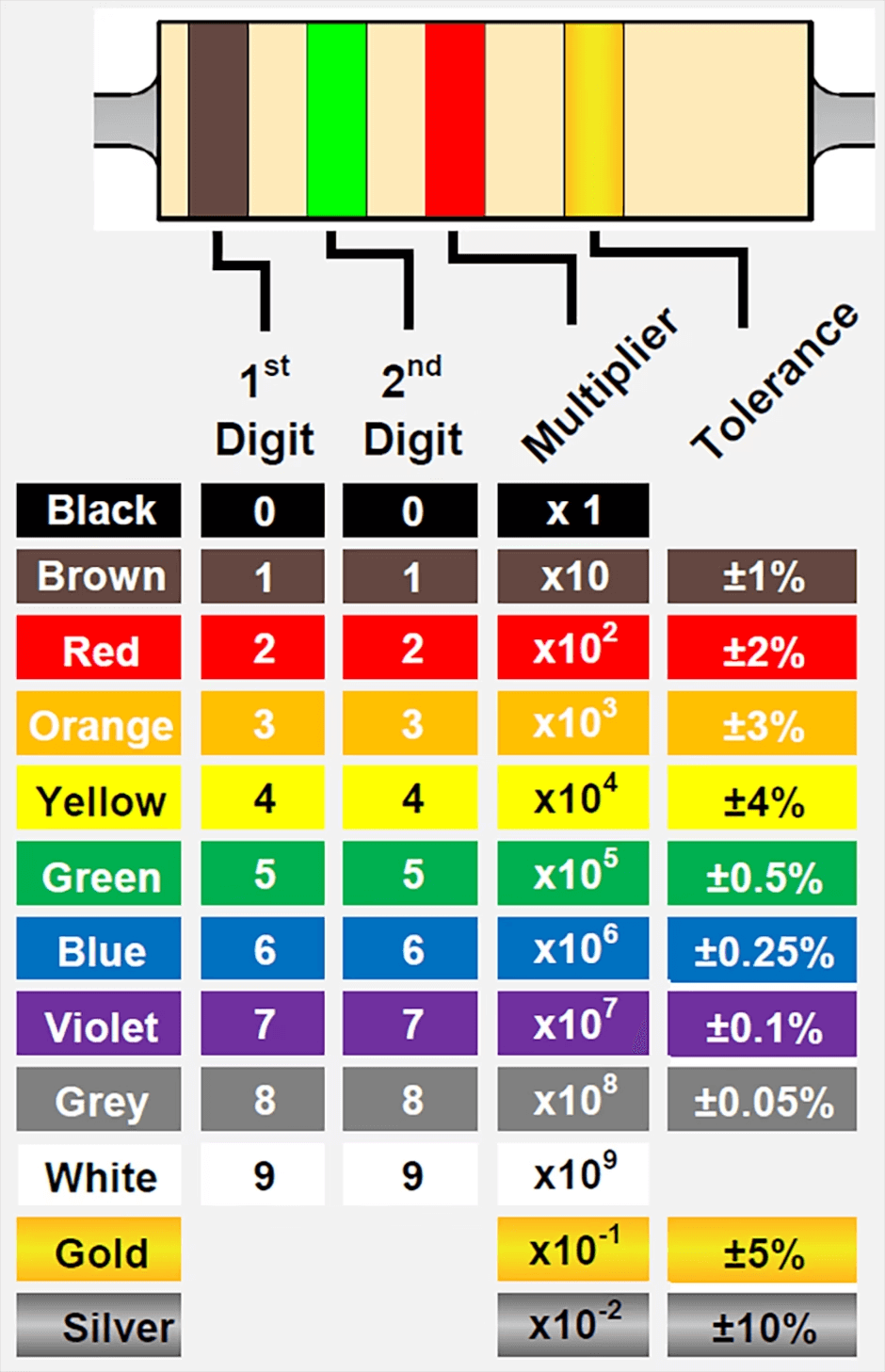
Figure 3: 47k Resistor Color Code
How to Read a 4-band 47k Ohm Resistor Code?
To read the color code of a 47k resistor, focus on each band's meaning. The colors help us determine the resistance value and tolerance of the resistor. A 4-band resistor has:
• Two value bands (first and second band)
• One multiplier band (third band)
• One tolerance band (fourth band)
For a 47k Ohm resistor, the first band is yellow. Yellow stands for the number 4. The second band is violet. Violet stands for the number 7. Now, combine the numbers from the first two bands. From yellow (4) and violet (7), you get 47.
Next, check the third colored band that tells you what to multiply the first two numbers by. For the 47k Ohm resistor, the third band is orange. Orange means you multiply by 1,000.
Take the number 47 (from the first two bands) and multiply it by the multiplier from the third band:
47 x 1,000 = 47,000 Ohms, or 47k Ohms
For a 47k Ohm resistor, the fourth band is gold. Gold means the tolerance is ±5%, meaning the actual resistance can vary by 5% above or below the listed value.
You now know how to read the resistor. The 4-band 47k Ohm resistor has:
• A value of 47,000 Ohms.
• A tolerance of ±5%.
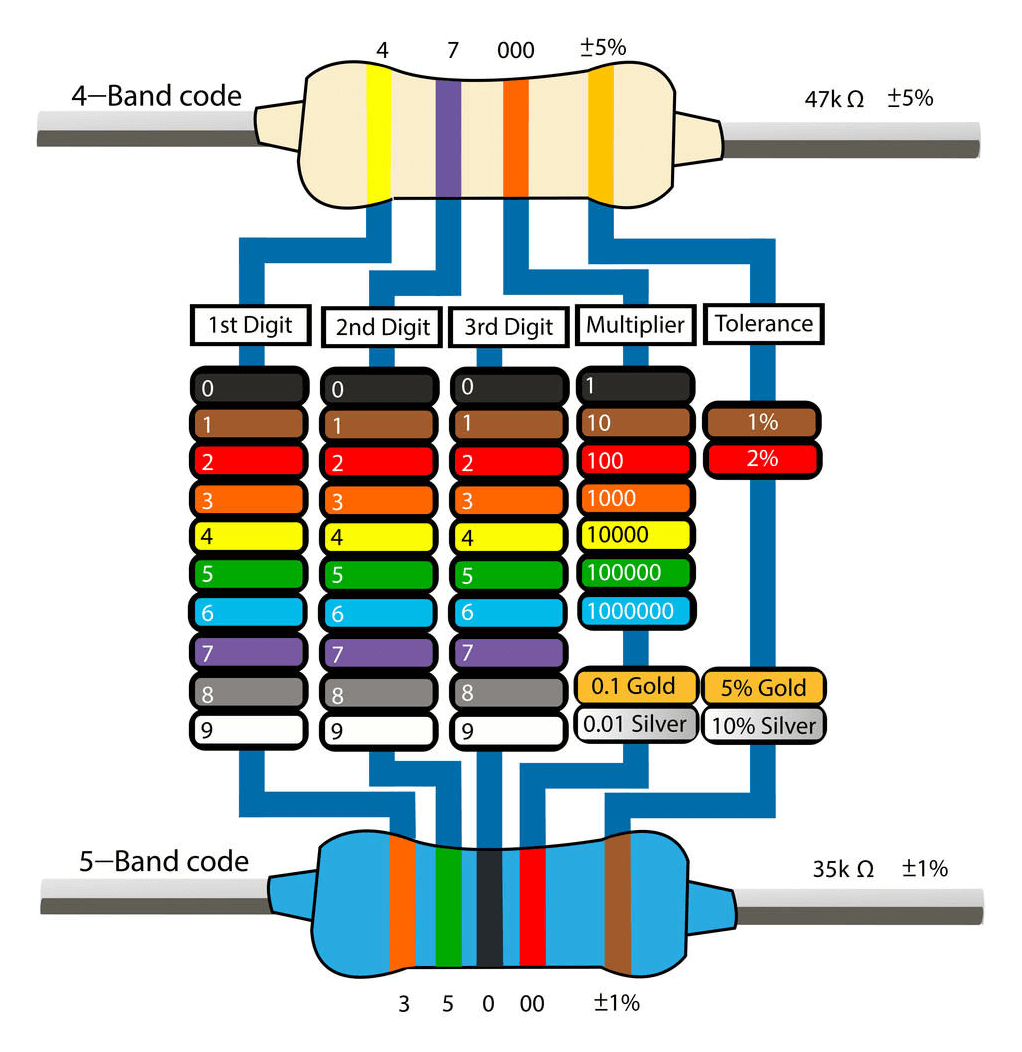
Figure 4: A 4-band 47k Ohm Resistor Code
Applications of the 47k Resistor
One of its most common uses is in voltage divider circuits, where it helps split the input voltage into smaller, manageable levels that can be safely utilized by different components in the circuit. This ensures that each part of the circuit receives the appropriate voltage, preventing damage to sensitive components and ensuring the overall system functions within safe operational limits.
In transistor biasing circuits, the 47k resistor is good for setting the correct base voltage of a transistor that determines whether the transistor is in its "on" or "off" state. By setting the base voltage appropriately, the resistor allows the transistor to operate efficiently, either amplifying signals or acting as a switch. The resistor's value is useful in these applications because small changes can affect the transistor, causing poor switching or incorrect signal amplification.
Another important use is in amplifier circuits, where the 47k resistor helps control how much the amplifier increases the signal's strength. "Gain" is the term for how much stronger the amplifier makes the input signal. The 47k resistor affects how much the signal gets amplified by adjusting the resistors in the circuit. This control over gain is excellent for things like audio equipment, radios, and other devices that need steady and accurate signal boosting.
The 47k resistor is frequently employed in feedback loops within operational amplifiers (op-amps) and other precision circuits. In these configurations, the resistor helps stabilize the circuit by feeding a portion of the output signal back into the input, ensuring consistent and controlled performance.
These applications show how 47k resistor required in modern electronics. It is need to carefully control voltage, current, and signals, making sure things work correctly and efficiently.
The Difference Between 4.7k and 47k?
The main difference between these two is their resistance, 47k ohms is ten times greater than 4.7k ohms. This difference impacts how much current flows through the circuit and how much power is handled.

Figure 5: The 4.7k Resistor
Effect on Current Flow
The resistance of a resistor directly influences how much current can pass through it, following Ohm's Law, states that current is inversely proportional to resistance when the voltage stays the same. A 4.7k ohm resistor allows more current to flow compared to a 47k ohm resistor. For example, in a circuit with a 5V supply, a 4.7k ohm resistor will allow about 1.06 mA of current, while a 47k ohm resistor only allows around 0.106 mA. This means a 4.7k ohm resistor is better for situations where higher current flow is required, such as in circuits with active components like filters or drivers that require more power transfer.
Power Dissipation and Efficiency
Resistor values also impact how much power is dissipated as heat. Power dissipation depends on both the current and the resistance, as given by the formula ![]() . Since a 4.7k ohm resistor allows more current, it also dissipates more power, means you need to manage heat better in circuits using this value. If too much heat is generated, it can cause the resistor or nearby components to fail. On the other hand, the lower current through a 47k ohm resistor means it dissipates less power, making it more suitable for energy-efficient designs, like in battery-powered devices or circuits where minimizing heat is required.
. Since a 4.7k ohm resistor allows more current, it also dissipates more power, means you need to manage heat better in circuits using this value. If too much heat is generated, it can cause the resistor or nearby components to fail. On the other hand, the lower current through a 47k ohm resistor means it dissipates less power, making it more suitable for energy-efficient designs, like in battery-powered devices or circuits where minimizing heat is required.
Noise Generation and Signal Quality
Another factor to consider is thermal noise, which increases with both resistance and current. A 4.7k ohm resistor generates more noise than a 47k ohm resistor because of the higher current. This extra noise can interfere with signal quality in sensitive applications, such as audio systems or precision measurement devices. In contrast, the lower current through a 47k ohm resistor result in less noise, making it a better choice in circuits that demand high signal integrity.
A 4.7k ohm resistor is often used in applications that require moderate current flow and power handling, such as pull-up or pull-down resistors in microcontrollers, signal conditioning circuits, or in voltage dividers. In contrast, a 47k ohm resistor works better in low-current applications, like setting bias points in transistor circuits, working with high-impedance inputs, or being part of feedback networks in operational amplifiers. In these situations, the 47k ohm resistor's ability to operate with less current ensures stable and reliable performance.
Variants and Alternatives 47k Ohm Resistor
The 47k ohm resistor comes in different sizes and power levels, so that you can pick the right one depending on the needs of the circuit. The power rating of a resistor tells you how much heat it can handle without getting damaged. Common power ratings for a 47k ohm resistor are from 1/8 watt to 1 watt. Picking the right power rating helps prevent overheating and ensures the circuit lasts longer.
Resistor sizes also matter, especially in modern, small devices. Smaller resistors, like those in 0201 or 0402 sizes, are used in tiny spaces like smartphones. Larger ones, such as 0805 or 1206 sizes, handle heat better and are easier to work with when assembling circuits by hand.
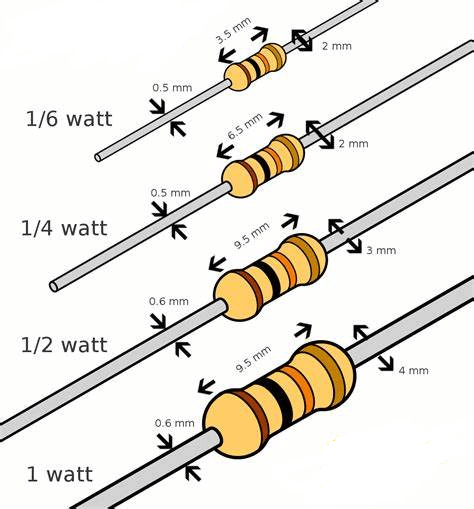
Figure 6: Resistor Sizes
Parallel and Series Setups
Sometimes a single 47k ohm resistor might not be enough for what a circuit needs. Putting resistors in parallel reduces the total resistance and spreads the load across multiple resistors, and helps with heat management. For example, two 94k ohm resistors in parallel give a total resistance of around 47k ohms.
On the other hand, putting resistors in series increases the total resistance. This can help manage voltage in a circuit, especially when controlling how much voltage different parts receive. Series resistors are used in circuits that need precise control over voltage levels.

Figure 7: Circuit Design Parallel and Series Resistors
Conclusion
The 47k ohm resistor, known for its specific resistance value and easily recognized by its color bands, is an important part of many electronic circuits. Whether it's used to control amplifier gain, set the bias of a transistor, or manage power dissipation, the 47k ohm resistor plays a role in making circuits work well and efficiently. It’s often used in voltage dividers, feedback loops, and other applications where the right choice of components is good for good electrical performance and reliability. Comparing it to the 4.7k ohm resistor highlights how different resistance values affect current flow, power handling, and noise. The 47k resistor stands out for its stability when dealing with higher currents. With various power ratings and sizes available, and the ability to use resistors in series or parallel to adjust values, designers have the flexibility to meet exact circuit requirements. This shows how great the 47k ohm resistor is in helping electronic devices perform reliably and last longer in today’s fast-changing tech world.
Frequently Asked Questions [FAQ]
1. What is the color code for a 47K resistor?
The color code for a 47K ohm resistor in a 4-band is Yellow, Violet, Orange, Gold. This means the first two bands (Yellow and Violet) represent the digits '4' and '7', respectively. The third band (Orange) indicates the multiplier (x1000), which makes the value 47 x 1000 = 47000 ohms or 47K ohms. The fourth band (Gold) represents the tolerance.
2. What is the tolerance of a 47K ohm resistor?
The tolerance of a resistor is indicated by its fourth band. For the 47K ohm resistor, the tolerance is ±5%. This tolerance band reveals how much the resistance value may vary from the stated 47K ohms, meaning it could be as low as 44.65K ohms or as high as 49.35K ohms.
3. What is the color code 5 band of a 47k resistor?
In a 5-band, the color code for a 47K ohm resistor would be Yellow, Violet, Black, Red, Brown. Here, the first three bands (Yellow, Violet, Black) denote the digits '4', '7', and '0', the fourth band (Red) is the multiplier (x100), making it 470 x 100 = 47000 ohms, and the fifth band (Brown) suggests a tighter tolerance of ±1%.
4. What is the voltage drop of a 470 ohm resistor?
The voltage drop across a resistor can be calculated using Ohm's Law,![]() , where V is the voltage, I is the current, and R is the resistance. For example, if a 470 ohm resistor has a current of 10 mA flowing through it, the voltage drop would be
, where V is the voltage, I is the current, and R is the resistance. For example, if a 470 ohm resistor has a current of 10 mA flowing through it, the voltage drop would be ![]() .
.
5. When to replace a resistor?
A resistor should be replaced if it shows signs of physical damage such as cracking or charring, if it emits a burnt smell, or if it is noticeably discolored. If measurement with a multimeter show that its resistance is out of the specified tolerance range for its value, it’s also an indicator that the resistor needs replacing. This ensures your circuit operates correctly and safely, maintaining the intended performance.